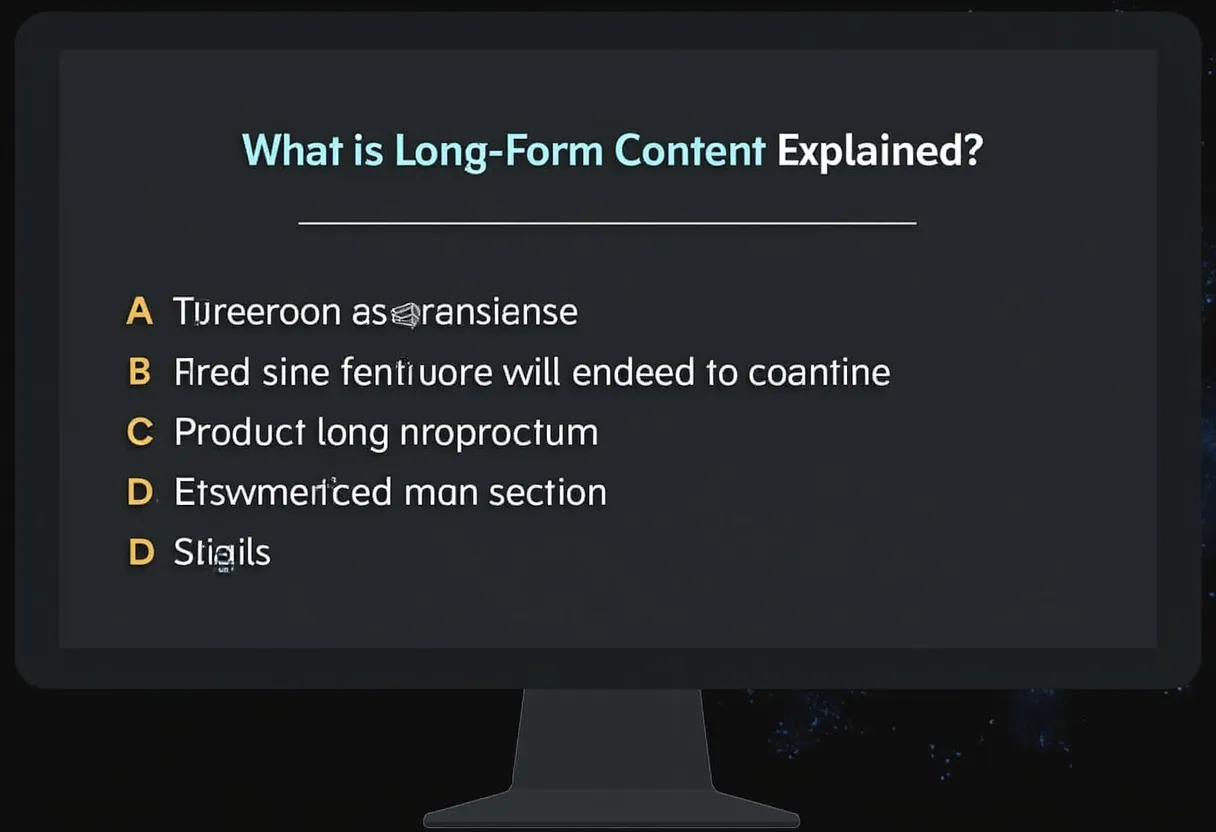Definition of Long-Form Guides
Long-Form Guides refer to comprehensive and detailed content pieces that thoroughly cover a specific topic or subject. These guides typically exceed 1,000 words and are designed to provide in-depth information, addressing multiple user queries and related subtopics. They can take various forms, such as blog posts, white papers, case studies, and instructional guides, all aimed at offering a complete and authoritative treatment of the subject matter.
How It Works
Function and Concept
Long-form guides function by providing extensive coverage of a topic, allowing for a deep dive into the subject matter. This approach helps in establishing the author or the website as an authority in the niche.
Relevance in SEO
Long-form content is favored by search engines because it tends to be more comprehensive and valuable to users. It allows for the integration of multiple keywords, including long-tail keywords, which can drive organic traffic and improve search rankings.
Practical Use Cases
User Intent
Long-form guides are ideal for users searching for detailed answers to complex questions or guides to strategies and products. They cater to users looking for in-depth information, which can lead to higher engagement and lower bounce rates.
Content Formats
These guides can be presented in various formats such as how-to articles, tutorials, case studies, white papers, and comprehensive blog posts. Each format is designed to convey detailed information in an organized and accessible manner.
Why It Matters
Importance in SEO
Search Engine Rankings
Long-form guides can significantly improve search engine rankings because they provide comprehensive and detailed content that search engines recognize as high-quality and relevant. The average length of top-ranking articles on Google is often around 1,447 words.
User Engagement
These guides keep readers engaged for longer periods, reducing bounce rates and increasing the average time spent on the site. This improved user engagement metric can indirectly boost SEO performance.
Backlinks and Authority
Quality long-form content is more likely to attract backlinks from other websites, which is a critical factor for SEO. This helps in building authority and credibility, positioning the website as a reliable source of information.
Evergreen Content
Long-form guides can be evergreen content, remaining relevant over time and allowing for regular updates to keep the information fresh and valuable.
Best Practices
Actionable and Valuable Content
Ensure the content is actionable, providing readers with practical tips, advice, and resources they can use. Avoid generic or obvious advice and focus on unique and valuable insights.
Well-Structured and Visual
Organize the content with clear headings, subheadings, bullet points, and a table of contents. Include visuals such as screenshots, infographics, GIFs, and embedded videos to make the content more engaging and easy to digest.
Keyword Strategy
Perform keyword research and integrate relevant keywords naturally throughout the content. Focus on placing keywords in important areas like the title, headers, and the first 100 words.
Optimize for Readability
Break up the content into short paragraphs and use bullet points where appropriate. Ensure the content is mobile-friendly and easy to navigate.
Semantic Completeness
Address related topics and subtopics to provide a comprehensive view of the subject. This semantic completeness helps search engines understand the content’s relevance and quality.
Format Selection
Choose a format that best conveys the message, such as guides, listicles, how-to articles, or case studies. Ensure the format is not plagiarized and adds unique value to the existing content landscape.
Dwell Time and Engagement
Aim for a dwell time of 120 seconds or greater by ensuring the content is engaging and valuable. Higher dwell times indicate to search engines that the content is relevant and useful to users.
Related Terms
In the realm of SEO, understanding related terms can be beneficial.
Long-Form Content Domination
Refers to mastering the art of creating comprehensive long-form content that stands out in the search results.
Content Depth and Readability
Ensuring that content is not only deep and informative but also easy to read and understand.
Content Length Theory
Examines the ideal length for content to maximize engagement and SEO performance.
Content Hub
Creating a central repository or hub where all related content pieces are connected, enhancing the user’s journey and SEO structure.
Cornerstone Content
High-quality, authoritative articles that are central to your website’s content strategy.
Evergreen Content
Content that remains relevant and valuable over time without frequent updates.
Evergreen Content Strategy
A strategy focused on creating content that retains its value over a long period.
Content Pillar Strategy
Building a content structure around a few core topics that serve as the main pillars of your content strategy.
Power Page SEO
Optimizing a single, comprehensive page to rank highly for multiple related search queries.
Content Relevance
Ensuring your content is relevant to the needs and interests of your target audience.
Conclusion
Long-form guides play a crucial role in SEO by providing comprehensive, detailed, and valuable content that can significantly improve search engine rankings, user engagement, and authority. By following best practices such as creating actionable content, structuring it well, optimizing keywords, and ensuring readability, you can enhance the effectiveness of your long-form guides. Incorporate related terms and concepts to improve internal linking and provide a more thorough understanding for your audience. Ultimately, well-crafted long-form guides can position your website as an authoritative source and drive sustained organic traffic.



